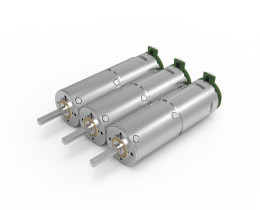Why Your Next Project Needs a DC Gear Motor Datasheet That Actually Makes Sense
Let’s talk about something boring but critical: datasheets. Specifically, the kind that comes with a DC gear motor. You’ve probably skimmed a dozen of these documents, only to end up squinting at jargon-filled tables or vague performance graphs. What if a datasheet didn’t just exist but actually helped?
.webp)
KPOWER’s DC gear motors don’t hide behind vague specs. Imagine opening a datasheet and seeing torque curves plotted against real-world scenarios—like how a motor performs after running nonstop for 48 hours in a dusty warehouse. Or noise levels measured in an actual workshop, not a soundproof lab. One customer joked, “It’s like the datasheet read my mind before I asked the question.”
Wait, why does this matter?
Because a motor isn’t just a component—it’s the muscle of your machine. If the datasheet glosses over heat dissipation quirks or fails to explain why gear ratios matter for your specific load, you’re left guessing. And guessing costs time, money, and sanity.
Here’s a story: A small robotics team once ordered a generic DC gear motor for a prototype. The datasheet promised “high efficiency” but didn’t specify how efficiency dropped under variable voltages. Two weeks later, their bot stalled mid-demo. They switched to a KPOWER motor after spotting a datasheet that mapped efficiency against voltage fluctuations. The result? A smoother, quieter, “why didn’t we do this sooner” upgrade.
Q: What’s the biggest headache when comparing motors?
A: Apples-to-oranges specs. One brand lists “max torque” as a theoretical peak; KPOWER defines it as “torque achievable without stalling after 100 cycles at 40°C.” Real conditions. Real numbers.
KPOWER’s approach? Treat datasheets like a conversation. Instead of dumping raw data, they annotate. For example, a note beside the RPM range might say, “Ideal for conveyor systems moving 5–10kg loads—see page 3 for vibration stats.” It’s like having a engineer whispering tips over your shoulder.
Still, some folks ask: “Can’t I just test the motor myself?” Sure, if you’ve got weeks to spare. But why trial-and-error when the datasheet hands you shortcuts? One user put it bluntly: “It’s the difference between a treasure map and a blank piece of paper.”
The bottom line isn’t about motors. It’s about trust. A transparent datasheet signals a company that respects your time—and your intelligence. No fluff, no hidden limits, just facts you can use. After all, if the details are clear from the start, you’re already halfway to a solution.
So next time you’re skimming a DC gear motor datasheet, ask: Does this feel like a helpful guide or a puzzle to solve? If it’s the latter, maybe it’s time to demand better. Because good specs shouldn’t be a secret code—they should be the answer before the question.


































.webp)

